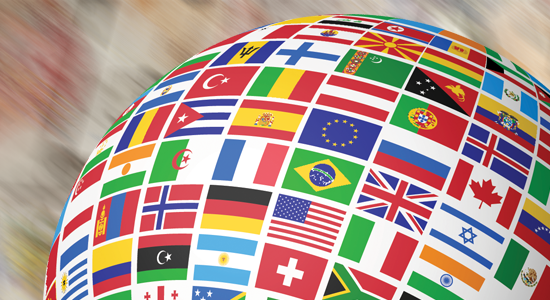Increasingly here at Saffron, we’ve been asked to create courses so that they’re suitable for translation. In today’s globalised business world, working across linguistic borders has become extremely common. This means it’s essential that you remember that any content you’re writing may need to be translated throughout the design process.
When working in this way, attention to detail becomes vital, and although working in translation may seem like a daunting task, it doesn’t have to be this way. Below are my top five tips for creating a course in translation to make it as easy as possible.
1. Special characters
To display special characters which feature accents, or are not taken from the Latin alphabet (the one we use in English) in web pages, we have to specify them as HTML codes. This page contains the familiar names and corresponding numerical codes to use to display foreign characters.
2. Layout
Always double space any content because the content in other languages may be lengthier than in English. For example, for a quiz interaction which would require showing a question, answer options and feedback in a resolution of 1000x700px, consider that the layout should allow enough room to contain at least double the size of the content in English.
3. Images
It’s always better to use images common to all languages to avoid any last-minute surprises. These images must be instantly recognisable to people from all backgrounds. It’s best to make sure that everything is as clear and simple as possible. Images with content might need translation, so list them all and plan during the project kick-off stage.
4. Translation items
Prepare a list of items like navigation buttons or links which need to be translated beforehand. If the changes are left during the development stage, there is a chance that they won’t be found until the final review is carried out. The easiest way to work through this systematically is to use an excel document and create columns for each language, and get them all translated in advance.
5. Links
Check out the links which might link up to pages written in the incorrect language. Tooltips or Alt texts are often left out in English, though they should be included when working with other languages, so this should also be considered.
So, there you have it, my top five tips to consider when creating courses or websites in translation. Having to work in this way is great when it comes to learning because it means that we constantly have to be mindful of the most straightforward learning strategy we can possibly use. As well as considering the fact that learning must be easy to understand for learners of all ability levels, but also that it must be easy to understand for people of different nationalities.
It’s really important to be aware that your work may need to be translated right from the start of the design process, rather than only thinking about it at the final stage of development. With the growth of multi-national organisations seeking elearning content, this is more important than ever before, and, if you follow these tips you’ll find that you don’t have to be an expert linguist to be able to start working on translation.





